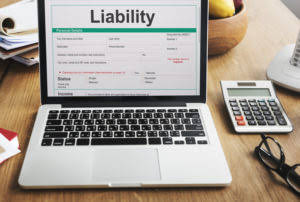How To Start A Bookkeeping Business 2024 Guide

With these tips, you can begin to streamline your finances to give your small business the best chance of succeeding. Consider taking some short bookkeeping or accounting courses to learn more. You might want to begin with Bookkeeping Basics or Intuit Bookkeeping, both offered by Intuit on Coursera.
You should consult your own legal, tax or accounting advisors before engaging in any transaction. The content on this website is provided “as is;” no representations are made that the content is error-free. Imagine your small business is a ship sailing through the ocean of the market. The captain needs a map to navigate, and How to Meet Your Bookkeeping Needs that’s where bookkeeping comes into play. Bookkeeping is like the compass and map for your business ship, guiding you through the waves of transactions and helping you avoid the storms of financial confusion. If you’re a busy small business owner with a million things to do, it’s easy to let bookkeeping fall by the wayside.
Business Cards
A client’s financial activities will include all transactions related to their income and expenses and a bookkeeper is responsible for recording all of these transactions accurately. Some bookkeepers may also have to facilitate financial transactions and ensure transactions are legally compliant. When you keep detailed, organized records of your business transactions, tax season suddenly won’t feel like such a daunting chore.

Look into the industry-specific expertise they have to get a better idea. You may also want to see if they’ve handled bookkeeping for other businesses that are around the same size and structure as yours. Maybe you’re not feeling confident enough with your bookkeeping skills and are unsure of where to begin—after all, you can’t be an expert on everything!
Exclusive Promotions for Local Businesses
The double-entry bookkeeping method, on the other hand, is usually used by businesses that want to expand or do need more nuanced reporting. Single-entry bookkeeping is simpler, and is usually used by businesses with few or no employees, minimal plans to scale, and no need for in-depth financial reporting. Before you start bookkeeping, you need to determine the right bookkeeping method and corresponding accounting method for your business. Up-to-date bookkeeping tells you the critical things you need to know. Without it, you’ll only have a rough idea of how much money you have, which outstanding bills you need to pay and whether you have been paid for the goods or services you provide.
In order to have a viable and valuable company, revenues must exceed expenses. Revenue, also called income, is any money earned by your business either through products sold or services rendered. These are the obligations and debts owed by your business, like accounts payable (A/P), such as your accounts payable (A/P) and any loans your business owes. For now, let’s demystify the five – yup, just five – basic account types necessary for bookkeeping. Let’s use the cash flow coverage ratio as an example, which will tell you if you have enough cash to pay off debts in the short term and the long term. To calculate the Cash Flow Coverage Ratio, divide Net Cash Flow from Operations by Total Debt.
Introducing ReCats: A Better Way to Manage the Chaos of Uncategorized Transactions
Single-entry accounting records all of your transactions once, either as an expense or as income. This method is straightforward and suitable for smaller businesses that don’t have significant inventory or equipment involved in their finances. It doesn’t track the value of your business’s assets and liabilities as well as double-entry accounting does, though. Liabilities are what the company owes like what they owe to their suppliers, bank and business loans, mortgages, and any other debt on the books. The liability accounts on a balance sheet include both current and long-term liabilities. Accounts payable are usually what the business owes to its suppliers, credit cards, and bank loans.
